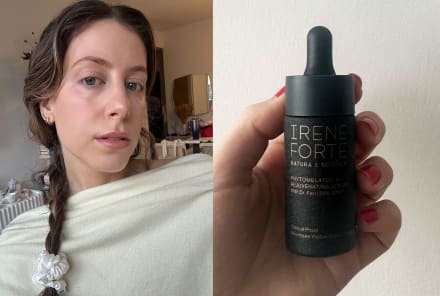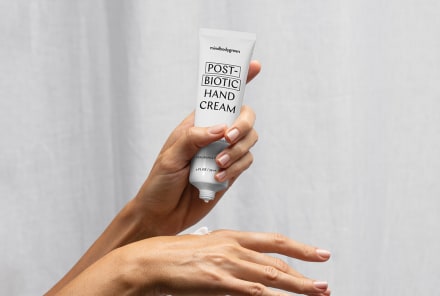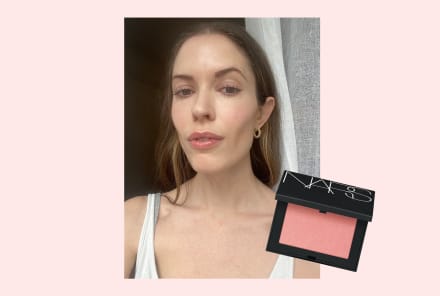Advertisement
A Homemade Plant Food Recipe + How To Use It For Happy Greenery

Plants, like humans, need certain nutrients to grow strong. Healthy, balanced soil contains all of the nutrients a plant needs, but it can lose them over time—which is where plant foods and fertilizers come in.
Complete fertilizers often contain the three essential plant nutrients—nitrogen, phosphorus, and potassium—as well as a number of beneficial micronutrients that can assist with photosynthesis. Plant foods, on the other hand, usually contain only a few of them. (Think of them as a targeted supplement for your greenery.)
And eco-friendly plant parents, listen up: It's possible to make your own plant food using common kitchen ingredients that would otherwise go to waste. These natural, homemade plant foods tend to be safer than store-bought synthetic fertilizers, which are very concentrated and can harm plants if applied too liberally. They're also cheaper than store-bought organic fertilizers, made from things like seaweed and animal manure, which tend to be quite pricey.
Here, Kelly Wilkniss, gardening expert and host of My Soulful Home on Smart Healthy Green Living shares her simple, three-ingredient recipe for well-rounded homemade plant food.
Homemade 3-ingredient plant food.
Wilkniss says you can use the following fertilizer on any type of plant, but she's had the most success using it in her container garden. It's slow-release, meaning it releases its nutrients gradually over time and doesn't need to be reapplied often. One every three to four months is plenty to help ensure that your soil stays in good shape.
Before we dive in, it's worth noting that some plant biology experts have concerns about applying kitchen scraps directly to soil, as it can damage plants if not done with care and know-how. Beginner gardeners might want to turn around here, but more experienced green thumbs can move ahead and get those eggshells ready.
Materials:
- A few eggshells that have been cleaned, dried, and crushed into small pieces (boiling the shells in water for a few minutes is a good way to ensure they're clean)
- 1-2 cup spent coffee grounds
- 1 banana peel
Method:
- Combine the ingredients in a bowl.
- For garden plants, dig a hole a few inches underground to dump the mixture in, then re-cover with soil. For container gardens, Wilkniss likes to fill the pot with some soil, add the plant food, and then continue filling the pot with soil and plants at the beginning of the growing season. (Really small potted plants likely won't have enough room for this.)
Why it works.
"This trifecta provides a steady source of potassium, phosphorus, calcium, and nitrogen," says Wilkniss. The nitrogen from the grounds helps support leaf growth, the calcium and phosphorous from the eggs will assist with root growth and strength, and the potassium from the banana can boost all-around plant health.
Signs your plants don't like it.
These ingredients do take time to break down in soil, and as they do, they can bring unwelcome bacteria, fungal infection, and fungus gnats to your plants, Leslie F. Halleck, M.S., a certified professional horticulturist and author, previously told mbg.
If you notice any strange leaf spotting or creepy crawlies after buying the blend, switch to a store-bought fertilizer or try another option.
Other ways to give your plants the nutrients they need.
Another way to deliver some of these kitchen scraps to plants without worrying about bacteria growth is to do the legwork of breaking them down yourself.
Soaking banana peels in water for a few days, for example, will leave you with a potassium-rich liquid you can use to water your plants. From there, you can throw those soggy peels—along with your eggshells, coffee grounds, and any other organic food or garden waste you have around—into your compost bin or vermicompost setup.
Eventually, your scraps will decompose into a super nutrient-dense soil that you can spread over the top layer of your garden. Green veggie scraps and grass clippings tend to be particularly good for composting since they're high in the nitrogen that plants love so much.
Alternatively, you can also make a liquid plant food by diluting 1 tsp. baking powder, 1 tsp. Epsom salts, and ½ tsp. ammonia into a gallon of warm water. "This mixture will provide tiny amounts of magnesium and nitrogen, but no micronutrients, so it is not a complete fertilizer," garden writer Barbara Pleasant tells mbg.
The bottom line.
Making your own plant food is one way to deliver some of the nutrients your plants need to thrive, though it should be done carefully. If you'd rather just skip this step altogether, might we suggest the oh-so-low-maintenance lasagna—aka "lazy"—gardening?
Watch Next
Enjoy some of our favorite clips from classes
Enjoy some of our favorite clips from classes
What Is Meditation?
Mindfulness/Spirituality | Light Watkins
Box Breathing
Mindfulness/Spirituality | Gwen Dittmar
What Breathwork Can Address
Mindfulness/Spirituality | Gwen Dittmar
The 8 Limbs of Yoga - What is Asana?
Yoga | Caley Alyssa
Two Standing Postures to Open Up Tight Hips
Yoga | Caley Alyssa
How Plants Can Optimize Athletic Performance
Nutrition | Rich Roll
What to Eat Before a Workout
Nutrition | Rich Roll
How Ayurveda Helps Us Navigate Modern Life
Nutrition | Sahara Rose
Messages About Love & Relationships
Love & Relationships | Esther Perel
Love Languages
Love & Relationships | Esther Perel

















